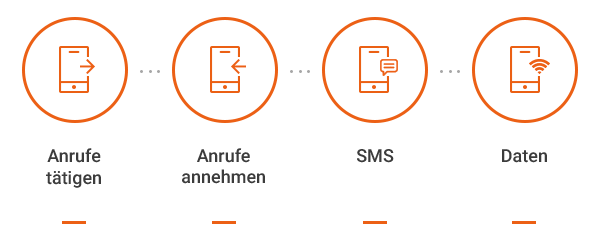What are frequency bands?
To use the mobile network, your tablet or smartphone needs to connect with a frequency range. Just like on a highway, there are different tracks that correspond to the respective frequency bands. In the USA, the 2G and 3G network, the slowest format, has been phased out and will soon be replaced by a faster band.
Not all devices can connect to all frequency ranges. For this reason, it is important to get familiar with the topic, particularly if you are traveling outside the EU.
In Europe, our data highways are built differently than in the USA. As a result, every smartphone or tablet needs to adapt to these circumstances. Newer models (starting from 2018) are often better able to do this than older models. The frequency ranges in the USA are separated into 3G (HSPA) and 4G (LTE).
Our plans with AT&T and H2O Wireless require these respective bands to function properly

What frequency ranges do I need for the USA?
Data transmission requires the frequencies 850 and 1900 Mhz in the 4G (LTE) network. For the best possible connection, we recommend 700, 850 and 1900 Mhz (band 12, 5 and 2).

